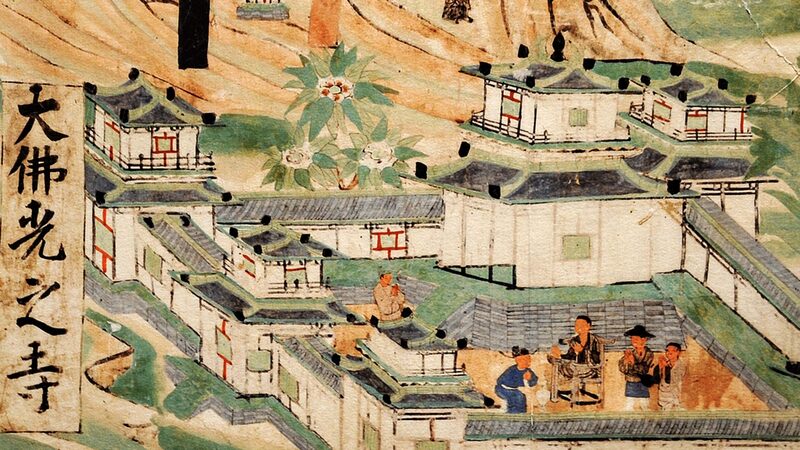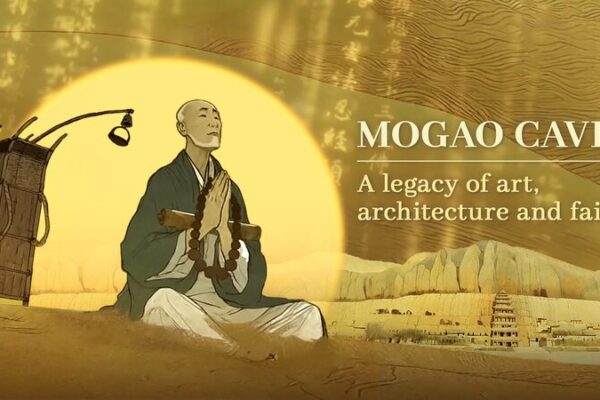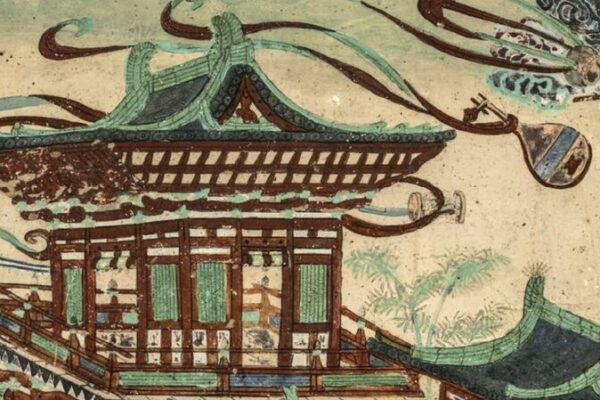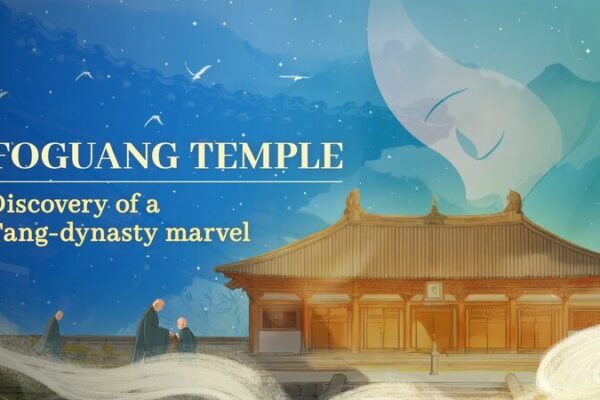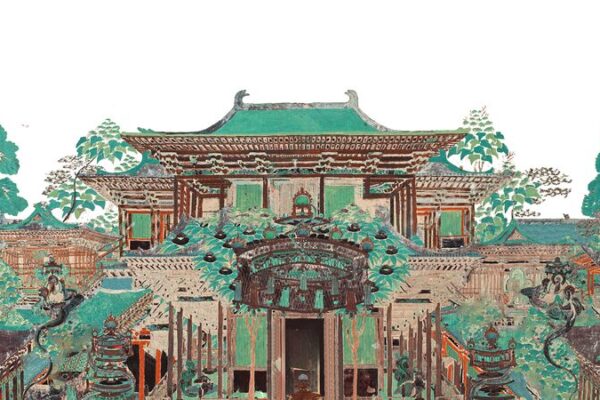Nestled in north China’s Shanxi Province, Mount Wutai stands as a sacred sanctuary, revered as the home shrine of Manjushri, the bodhisattva of wisdom. During the Tang Dynasty, this majestic mountain attracted dignitaries and eminent monks alike, becoming a beacon for the rapid development of Buddhism in the region.
The proliferation of Buddhist practices led to the establishment of numerous monasteries on Mount Wutai, including the renowned Foguang Temple. This temple, a masterpiece of ancient Chinese architecture, symbolizes the rich cultural and spiritual history that flourished during that era.
Remarkably, over 1,000 kilometers away in the heart of the Gobi Desert, the Mogao Caves of Dunhuang hold a vivid mural that intricately depicts Mount Wutai and Foguang Temple. These caves, a treasure trove of Buddhist art and scripture, serve as a testament to the widespread influence and connection of Buddhist culture across vast distances.
The mural not only showcases the artistic prowess of ancient craftsmen but also highlights the deep spiritual links between different regions. The depiction of Mount Wutai’s Foguang Temple within the Mogao Caves underscores the significance of these sacred sites in the collective consciousness of that time.
For today’s youth, these historical connections offer a glimpse into the rich tapestry of cultural and religious exchange that has shaped history. Exploring the stories behind such artifacts can provide a deeper understanding of the world’s shared heritage.
Reference(s):
cgtn.com
